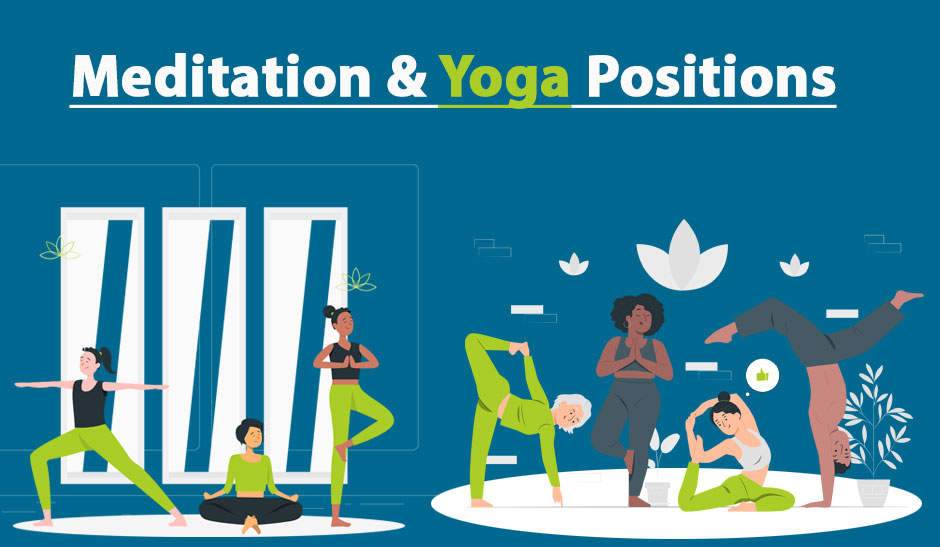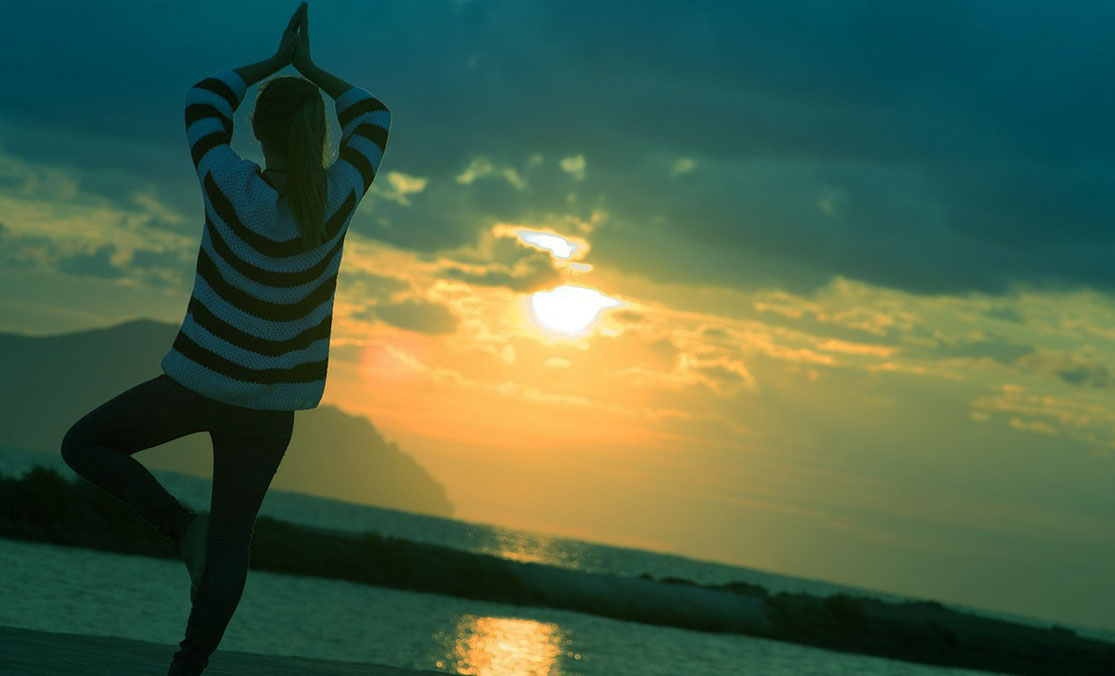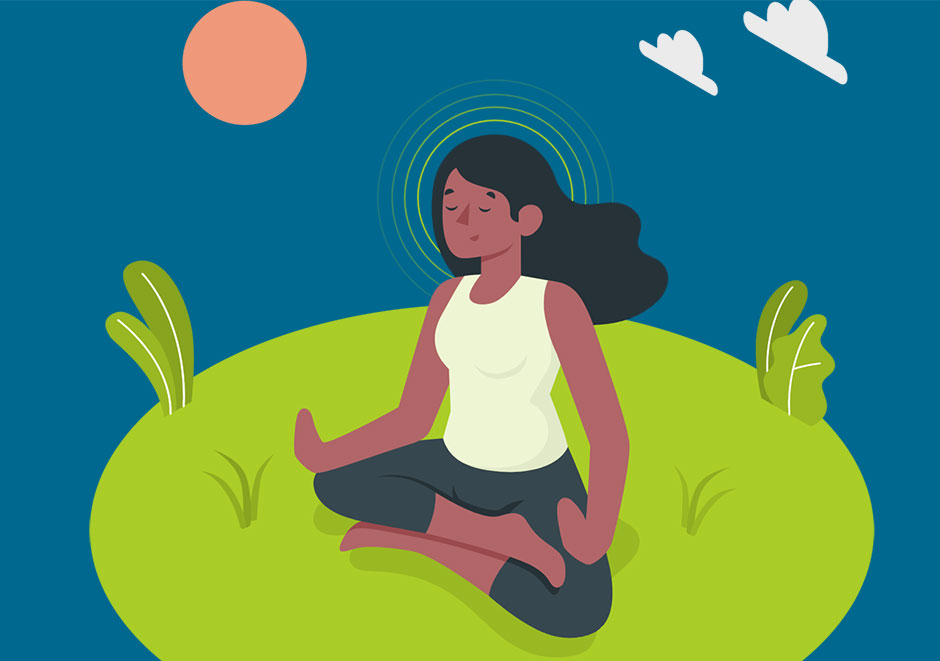Meditation Positions and Yoga Poses You Can Try This 2025
Last Updated: January 01, 2025
Tweet
Good meditation postures or asanas are important for both beginners and experienced meditators. It helps to relax the mind and improve mindfulness and presence. Over time, it reflects our personal meditation experience.
Perfect meditation position improves the mind, limits discomfort, and fosters body-mind awareness. Learn posture principles for different traditions, explore various postures, and adapt for personal discovery.
A good meditation posture has two objectives: a relaxed body and an alert mind. Three types of postures are commonly used: sitting, standing, and lying down. We'll focus on the seated posture, but lying and standing are important alternatives.
Please click here to get the complete details on available programs, activities, duration, cost, benefits and the rest of it.
Get More Info Now »
To get started with yoga, we have put together postures that, when performed one after the other, result in a perfect sequence for beginners. For the more demanding poses, the yoga teachers show a simpler variant for beginners and the complete pose for advanced users. In this way, everyone can approach the asanas according to their own mobility.
Best Meditation Positions You Can Try this 2025
Here we are explaining to you 5 best meditation postures that you can try to improve your daily meditation session.
Standing Meditation

Standing meditation offers unique benefits due to muscle engagement. It keeps the mind alert and supports a continuous meditative experience, fostering presence amid tension. This posture also aids in cultivating body awareness, resembling practices like qi gong.
Key considerations include starting with brief sessions and stopping if discomfort arises. Prolonged standing improves with muscle adaptation. Similar principles apply as in seated meditation positions.
The Seated Position
The seated posture is the most popular meditation position. It allows relaxation and presence by keeping the torso straight and limiting drowsiness. The legs and hips can rest completely, reducing fatigue and tension, and promoting relaxation.
There are many seated meditation postures, including the lotus, half-lotus, quarter-lotus, and Burmese positions. The lotus position is considered the best by some traditions but requires great flexibility and can be dangerous for the knees and hips. The half-lotus is a good alternative for the flexible. The quarter-lotus and Burmese positions are more accessible and relieve the knees by placing the feet lower or flat on the ground.
Here are few types of Seated Meditation Postures:
Sukhasana (the easy posture)
Sukhasana, the easy posture, is the tailor's position and the easiest of the seated meditation positions. It facilitates mental and physical balance without causing tension or pain as long as it is not held for very long. However, it can still be difficult to hold for a long time because most of the weight of the body is on the buttocks, causing slouching and pain in the back. Using a zafu (meditation cushion) can help bring the knees closer to the ground and better distribute the weight of the body. Sukhasana is a relaxing pose that can be done after long periods of siddhasana or padmasana.
Padmasana (lotus) and Ardha Padmasana (half lotus)

Padmasana (lotus) and Ardha Padmasana (half lotus) are seated postures. In Ardha Padmasana, one leg bends to place the sole of the foot against the opposite thigh, followed by bending the other leg to place the top of the foot on top of the opposite thigh. In Padmasana, the tops of the feet are positioned on the upper side of the opposite thighs. The hands rest on the knees in either chin or gyana mudra. The back remains straight, and the shoulders are relaxed. The eyes are closed. These two seated postures should be avoided by individuals experiencing sciatica or knee issues, due to the significant stress on these joints. Similarly, those with knee stiffness should not attempt either of these positions without first preparing the knee joint with suitable poses for seated meditation.
The advantage of these sitting positions is their ability to maintain complete bodily stillness for a prolonged period. They contribute to preserving an erect torso and head, akin to a pillar, with the legs offering a stable foundation. As the body remains motionless in these poses, a sense of calmness pervades the mind. This physical stability and mental tranquility constitute the initial step toward achieving a genuine meditative state. From a physiological perspective, these seated positions apply pressure on the lower spine, inducing a relaxing impact on the nervous system. Breathing rate diminishes, muscle tension decreases, and blood pressure is lowered.
Please click here to get the complete details on available programs, activities, duration, cost, benefits and the rest of it.
Get More Info Now »
Siddhasana (the perfect posture) and Siddha Yoni Asana
Siddhasana is for men and Siddha Yoni Asana for women. The posture is a little different for these two sitting positions. In these two sitting positions, you start sitting with your legs stretched out in front of you. For Siddhasana, bend the right leg and place the sole of the foot against the left thigh. The heel of the right foot should be in contact with the perineum and compress it. Then bend the left leg and place the left ankle directly on the right ankle so that the malleolus are touching. The heel of the left foot should be as close to the pubic bone as possible. The genitals are then between the two heels. Then push the toes and the outer edge of the left foot between the thigh and the right calf.
For Siddha Yoni Asana, bend the right leg and place the sole of the foot against the left thigh. The heel of the right foot should be in contact with the labia majora. Adjust the posture then bend the left leg and place the left ankle on the right ankle, the heel of the left foot is in contact with the clitoris. Place the toes and the outer edge of the left foot between the thigh and the right calf as in Siddhasana. Finally, for these two sitting positions, adjust the body so as to be comfortable. The knees touch the ground and the legs are locked. The back is straight and place the hands in gyana mudra or in chin mudra.
Please click here to get the complete details on available programs, activities, duration, cost, benefits and the rest of it.
Get More Info Now »
Vajrasana (lightning posture)
Vajrasana (lightning posture) derives its name from the vajra, symbolizing the divine weapon of Indra, the ruler of gods, akin to the mind reigning over the senses. The vajra is a significant nadi linked directly to the genitourinary system, governing sexual energy within the body. Therefore, the vajrasana pose and its variations benefit both the reproductive system and the digestive organs, offering relative ease of execution. In this posture, one sits on the heels with toes positioned inward or outward, providing a foundational pose for comfortable sitting meditation and effortlessly maintaining an erect back.
Particularly advantageous for individuals dealing with sciatica, this posture could initially cause mild thigh discomfort for those unaccustomed to it, which can be alleviated by slightly separating the knees while maintaining the posture. However, beginners might experience discomfort in the ankles or toes. In such cases, temporarily releasing the posture, extending the legs forward, and shaking the feet to dispel stiffness is recommended before resuming the pose. Enhancing the posture's comfort can be achieved by introducing a meditation cushion or folded blanket between the heels and buttocks.
Meditating While Seated in a Chair
A posture useful on the move or when lacking usual support, the chair meditation position aids in minimizing meditation-related problems and discomfort.
It is comfortable and familiar, it suits meditation well, especially when seated at the chair's edge without relying on the backrest.
Potential lower back tension can be mitigated by elevating the seat to keep thighs horizontal or slightly forward-leaning.
For effective chair meditation, keep feet flat and slightly apart, maintain a raised head and straight back with natural curves.Hand and arm placement varies for comfort but avoid crossing for tension prevention. This sitting posture is versatile and can be practiced in numerous settings, such as waiting rooms, buses, and offices.
Lying Meditation
Lying down can be an ideal posture for certain meditation sessions due to its natural relaxation effect, even if drowsiness or sleep occurs, which is acceptable. However, this position is less suitable for workplace meditation, as mindfulness meditation aims to enhance concentration and attention rather than induce sleep. Despite this, lying down offers benefits such as stability and body symmetry, making it fitting for guided meditation at home, especially for exercises like body scanning where direct contact with the ground aids in focusing on body sensations.
During a lying meditation, using a cushion beneath the knees can support the legs and back, reducing lumbar arch and enhancing comfort. Mindfulness meditation practiced in a lying position can also serve as a calming prelude to sleep, making it a convenient choice for bedtime relaxation. Regardless of whether you choose to sit or lie down, prioritizing comfort and dignity is key to an effective meditation session.
Best Yoga Poses You Can Try this 2025
We enlisted a few meditation positions above, now it's for Yoga time. Below we are providing you some yoga poses that you can try to enhance your daily yoga practice.
Child Pose (Balasana)
It is a yoga position commonly known for its calming influence, is not only popular among beginners but also serves as a valuable component within the routines of seasoned practitioners. This posture provides a tranquil respite amidst the dynamic practice of yoga.
Balasana offers various benefits including gentle stretching of thighs and ankles, hip joint mobilization, lower back tension relief, and a calming influence on the mind. To assume the pose, kneel on your yoga mat in heel-sitting posture, knees together or in a V-shape. Exhale, gently lowering your upper body forward to rest your forehead on the mat. Extending your arms along the floor, palms up and parallel to your thighs, eases shoulder tension. Maintaining the pose for around 30 seconds yields calming and restorative effects.
Table Top Pose (Bharmanasana)
Table Top is also a basic position in yoga, which serves as a starting point for various exercises. The effect of this pose is the strengthening of the supporting core muscles. To perform the position, come down onto the mat with your knees and hands. The insteps should be flat on the floor, with the knees under the hips and the hands placed under the shoulders. Take your knees hip-width apart and form a straight line with your back. The neck forms the extension of the spine, and your gaze should go down to the mat.
Mountain Pose (Tadasana)
Also known as the Mountain Pose, Tadasana is a classic standing yoga posture that signifies stability. This pose offers two primary effects: an enhancement of posture and strengthening of the legs.
Please click here to get the complete details on available programs, activities, duration, cost, benefits and the rest of it.
Get More Info Now »
To do the pose, stand upright with big toes touching and heels slightly apart, or place feet hip-width apart. Distribute weight evenly between feet, engage thigh muscles, straighten kneecaps forward, and rotate thighs inward. Let arms hang naturally, palms resting on thighs' sides. Relax shoulders down while lifting breastbone towards ceiling. Hold for about 30 seconds.
Cat - Cow Pose (Chakravakasana)
The Cat-Cow Pose (Chakravakasana) welcomes both a hollow back and hunchback, allowing you to deliberately mobilize your spine through opposing movements. Essentially, this position combines two distinct asanas: the cat (Marjaryasana) and the cow (Bitilasana), fluidly intertwined. Serving as an excellent and popular introduction to a yoga session, the cat-cow exercise holds the capacity to engage practitioners effectively.
This pose mobilizes the spine and stretches the back muscles gently. Start on all fours with fingers wide and gaze downward. Exhale, rounding your back like a cat from the pelvis, drawing your belly button in. Inhale, transition into the cow pose by arching your back and lifting your head. Repeat the flow, focusing on breath: inhale during the cow phase, exhale during the cat phase.
Seat of the Sage Pose (Marichyasana)
This pose massages and stimulates abdominal organs such as the liver and kidneys. The pose strengthens the spine, stretches the shoulders, and can relieve back pain and hip pain. It can also improve digestion or reduce fatigue, headaches, and insomnia. To perform the pose, sit on the mat with your right leg straightened and your left leg bent. Press your left foot into the mat. As you exhale, twist your torso to the left by placing your right elbow on the outside of your left thigh. Carefully turn your head to the left. As you inhale, try to lengthen your spine, and with each exhale, twist your core a little more. Hold the pose for 30-60 seconds and then repeat on the other side.
Corpse Pose (Shavasana)
Also recognized as the Dead Pose, Shavasana epitomizes the art of relaxation. Central to this posture is the practice of conscious relaxation – remaining awake, heightening mindfulness, and simultaneously embracing relaxation. The essence of Savasana lies in scrutinizing the body muscle by muscle, attentively addressing one area at a time and engaging with one thought at a time.
Lie on the mat, arms relaxed at your sides with palms facing up. Close your eyes and inhale slowly, deeply. Start with your head, focus on each muscle or body part, inducing relaxation. Allocate time for this. Try for 3-5 minutes, extending as concentration improves. The Dead Pose enhances well-being, releasing tension and lowering blood pressure.
Side Plank Pose (Vasisthasana)
Vasisthasana, also known as the side plank, is an exercise that works out almost your entire body. It requires a strong core, strong shoulders and arms, and good balance to balance sideways on one hand and the edges of your feet. Vasisthasana is an excellent preparatory exercise for all arm balances. The asana tightens your waist and arms, activates your back muscles, strengthens the shoulders and wrists, and promotes body balance.
In a Nutshell: Meditation Positions and Yoga Poses
So, we provided you the details of Meditation Positions and Yoga Poses that you can try for your next schedule. No matter if you are a beginner or an active enthusiast for yoga and meditation, you can always try the tips and suggestions we have provided.
We hope that this information will be helpful for you and you will have a better experience with your yoga and meditation practices. We wish you better physical and mental health. Thank you for reading!
You might be also interested: 2 Person Yoga Poses
Please click here to get the complete details on available programs, activities, duration, cost, benefits and the rest of it.
Get More Info Now »


